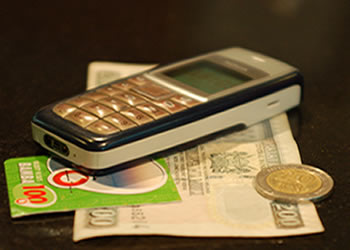In 1999, only one year after I got my first mobile phone, I launched a company that enabled people to order online groceries and pay their bills with our newly created, kitchen iPad-like device that would sit on the countertop. I distinctly remember hearing venture capitalists at the time ask us why we didn’t enable this over the mobile phone. Were they crazy? Back then, there were no iPhones or Android devices. In fact, there were no smart phones. We had mobile phones with a primitive black and gray screen for making telephone calls, and eventually sending text messages. How could we possibly use the mobile phone for advanced services?! Back in the late 90’s, few people imagined that today we would use cell phones as pocket computers for so many aspects our lives – or, for that matter, that more people globally would have access to cell phones than to toilets.
 Today there are 7 billion people on earth, and nearly 6 billion mobile phone subscriptions. Approximately 70% of people in developing countries have access to a cell phone, and many of them are using it to connect them to the information they need – including health information. In fact, healthcare workers and patients are using mobile phones to improve health systems and health outcomes. From remote diagnostics and disease surveillance to medication reminders and treatment support, mobile phones are transforming healthcare as we know it. Many of these shifts are taking place in developing countries, allowing the benefits of mobile health (mHealth) to reach those in remote and low-resource areas where access to healthcare and health information can be limited.
Today there are 7 billion people on earth, and nearly 6 billion mobile phone subscriptions. Approximately 70% of people in developing countries have access to a cell phone, and many of them are using it to connect them to the information they need – including health information. In fact, healthcare workers and patients are using mobile phones to improve health systems and health outcomes. From remote diagnostics and disease surveillance to medication reminders and treatment support, mobile phones are transforming healthcare as we know it. Many of these shifts are taking place in developing countries, allowing the benefits of mobile health (mHealth) to reach those in remote and low-resource areas where access to healthcare and health information can be limited.
Mobile phones are not just handy when it comes to health. They are also being used as a payment method in many developing countries, which is referred to as mFinance or mobile money. Rather than using cash, which risks being stolen, people are using their mobile phones to make payments or save up for the things know they will need – like their baby’s delivery and post-natal checkups.
That’s where this gets exciting: the areas of mHealth and mFinance have even greater potential when they overlap. A few weeks ago, the mHealth Alliance published a white paper I wrote featuring a few case studies from different countries where the intersection between these two mobile services is growing.
One of the countries profiled is Ghana, where the cost of a funeral for one person can be catastrophic for their entire family, but few people have life insurance. Mobile phones offer a way of to address this challenge. An organization known as Microensure is working with two mobile network operators to provide their customers with life insurance. One of the programs enabled customers to pay for their premiums through a mobile money system. The other program subsidizes premium payments based on the airtime used – in other words, a loyalty program that provides “free” life insurance through premium subsidies to customers who use a certain amount of minutes.
Another example comes from the Philippines, where mobile money systems have been in use for nearly a decade. These systems are being used for a number of healthcare-related exchanges, including payment for supplies, healthcare association dues, and co-payments. All of these areas come together to facilitate the efficiency of the healthcare system and ensure more people receive the healthcare they need.
It’s amazing to me that we’ve come so far so quickly. Interestingly, most mobile phones in developing countries are similar to the one I had back in 1998 (perhaps a bit faster, though). Many people even believe that as smartphones become more widely available in developing countries, the use of mHealth and mobile money will increase significantly. We’re not there yet, but when it does happen, I hope we will see the impact of this in improved global health. Who would have thought that the solution to some of our greatest global health concerns is right in the palm of our hands?
You can read more about the use of mobile money for mHealth in these and other countries at http://bit.ly/mfinancepaper.
Photo by Eric Hersman



 View All Blog Posts
View All Blog Posts